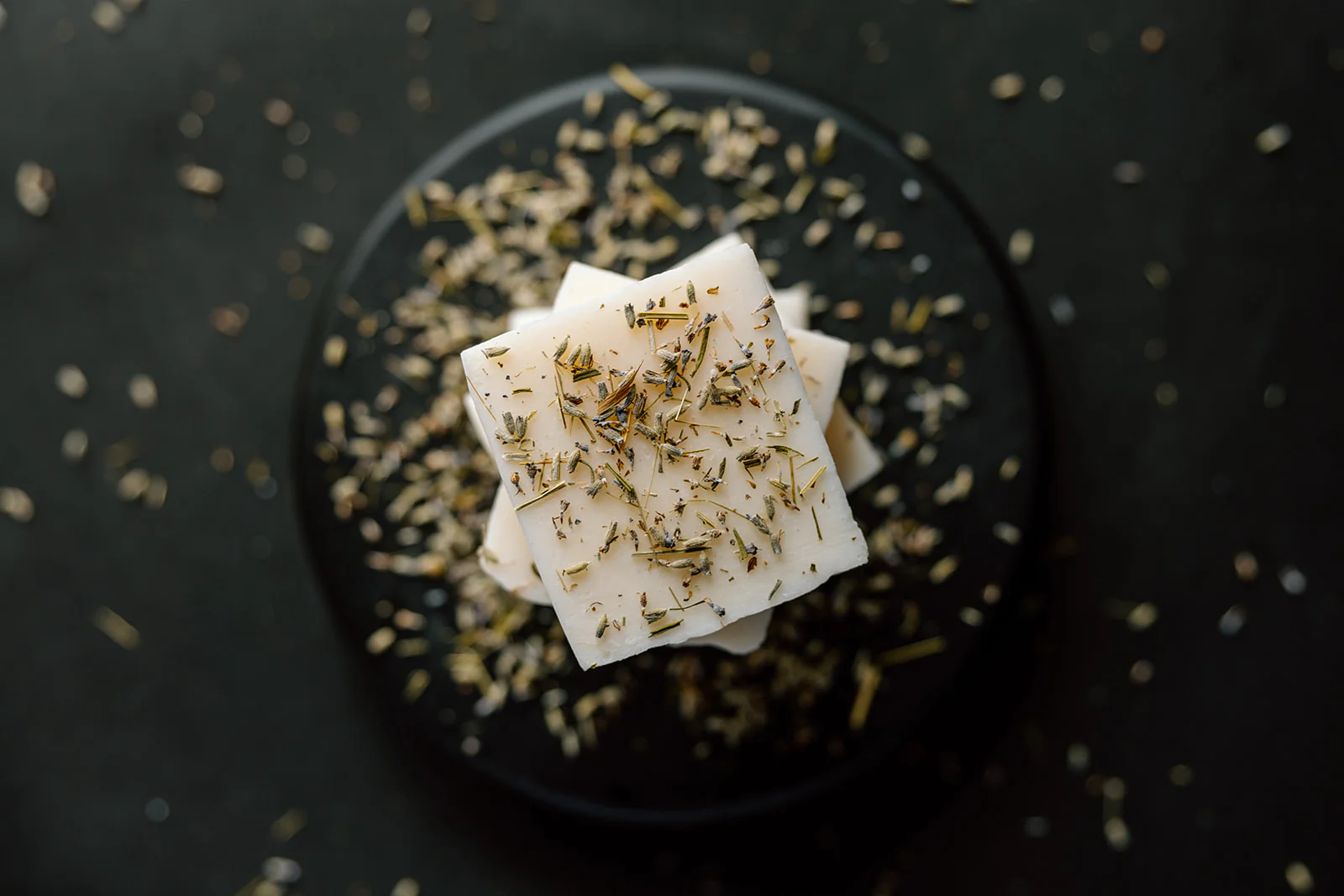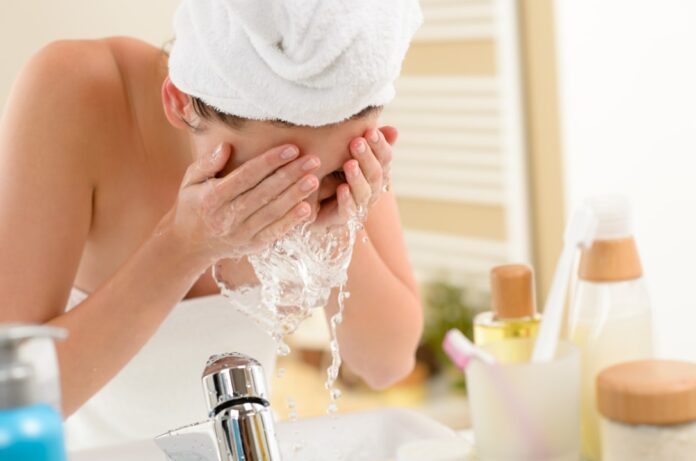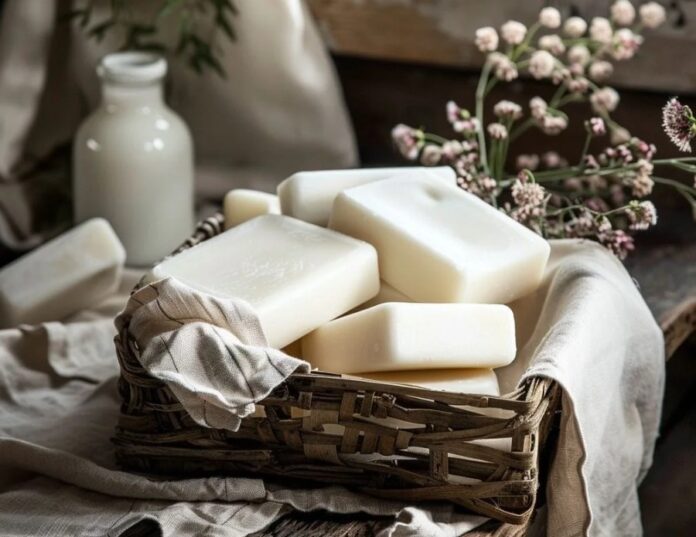In the ever-evolving world of natural skincare, old traditions are finding their way back into modern routines — and tallow soap is a perfect example. Once a staple in households across the globe, tallow soap is now enjoying a revival among those seeking clean, nourishing, and sustainable alternatives to mass-produced skincare products.
So, what exactly is driving this comeback? The answer lies in a blend of heritage, skin health, and a growing awareness of what truly natural skincare looks like.
A Time-Tested Tradition
Tallow — rendered fat from grass-fed cattle — has been used for centuries to make soap, candles, and balms. Before the rise of synthetic detergents and cheap vegetable oils, tallow soap was the go-to choice for washing hands, bodies, and even clothes. It was valued for its rich lather, long-lasting hardness, and moisturising properties.
As industrialisation took hold, many traditional methods were cast aside in favour of cheaper, faster alternatives. But today, as consumers grow more conscious of what goes onto their skin and into the environment, many are rediscovering the benefits of this humble, animal-based ingredient.
This renewed interest also reflects a cultural shift toward slow living. As people seek to reclaim ancestral practices and connect with simpler lifestyles, making or using tallow soap feels almost like an act of self-care in itself. It’s no longer just about cleanliness — it’s about mindfulness, sustainability, and reconnecting with nature.


Skin-Loving Benefits
One of the biggest reasons for tallow soap’s renewed popularity is its compatibility with human skin. Tallow is incredibly rich in nutrients — including vitamins A, D, E, and K — and contains a similar profile of fatty acids to our own sebum. This means it doesn’t just clean the skin; it actively nourishes and supports its natural barrier.
Unlike many commercial soaps, which can strip the skin of moisture and leave it feeling tight or irritated, tallow soap tends to leave the skin soft, soothed, and hydrated. It’s especially beneficial for people with dry, sensitive, or eczema-prone skin, who often struggle to find products that cleanse without causing flare-ups.
For those who struggle with skin conditions like psoriasis or rosacea, tallow soap’s anti-inflammatory properties can provide relief without resorting to harsh chemicals. The gentle yet effective formulation allows daily use, even for infants and the elderly.
Additionally, tallow’s unique composition means it helps lock in moisture without clogging pores. This makes it a surprisingly versatile option for both oily and combination skin types — a quality not all natural soaps can claim.
Fewer Ingredients, Fewer Concerns
Tallow soap is typically made using just a few simple, recognisable ingredients: tallow, lye (sodium hydroxide), and possibly essential oils or botanicals for fragrance and added benefit. There are no synthetic fragrances, sulphates, parabens, or preservatives — making it a favourite among those following zero-waste, paleo, or toxin-free lifestyles.
By choosing tallow soap, consumers can avoid the long list of unpronounceable additives found in supermarket soap bars, and instead embrace a more traditional, wholesome approach to cleansing.
For DIY enthusiasts and homesteaders, tallow soap is also a popular choice because it’s easy to make at home. This empowers individuals to control the ingredients they use and tailor their soap to suit their specific needs — whether that’s adding lavender for relaxation, calendula for healing, or activated charcoal for detoxification.


A Sustainable Choice
While some may hesitate at the idea of using animal fat in skincare, tallow — particularly from pasture-raised, ethically sourced cattle — can actually be a very sustainable choice. It makes use of a by-product that might otherwise go to waste, supporting the principles of a circular economy. For those who eat meat or support nose-to-tail practices, tallow soap fits naturally within a low-waste, ethical lifestyle.
Moreover, sourcing tallow locally reduces transportation emissions, making it an environmentally friendly option compared to imported plant-based oils like palm or coconut, which often come with deforestation and labor concerns. Supporting small-scale, local farms that provide tallow helps foster community economies and promotes regenerative agriculture.
Embracing Ancestral Wisdom
The resurgence of tallow soap is part of a larger movement that honors ancestral wisdom and forgotten skills. From sourdough baking to herbal remedies, people are increasingly looking to the past for inspiration on how to live healthier, more sustainable lives. Tallow soap represents a return to the roots of skincare — before synthetic foaming agents, petroleum-based moisturizers, and airbrushed advertising campaigns.
This isn’t just a nostalgic trend. There’s growing scientific interest in how traditional, whole-ingredient skincare compares to modern formulations. In many cases, ingredients like tallow prove to be more biocompatible and less irritating than their synthetic counterparts. For example, unlike soap bars filled with alcohol-based foaming agents, tallow-based soap supports the skin’s microbiome rather than stripping it away.
Moreover, tallow carries with it cultural heritage. Many traditional communities — from Indigenous peoples to rural European homesteads — used animal fat as a multifunctional ingredient, not only in soap, but also in cooking, healing salves, and even waterproofing. This multipurpose use reinforces the idea of respecting every part of the animal and using resources responsibly.


Expanding Into Modern Skincare Routines
While traditionally tallow has been used in solid bar soaps, modern brands are innovating with new formats such as tallow-based face balms, moisturizers, and even shaving creams. Consumers are discovering that tallow isn’t limited to cleansing — it can also hydrate, heal, and protect.
Artisan soap makers are combining tallow with luxurious natural ingredients like raw honey, goat milk, chamomile, shea butter, and clay. These combinations create soaps that are not only effective, but also indulgent — with creamy textures, soothing aromas, and therapeutic properties.
The clean beauty movement continues to grow, and consumers are becoming more ingredient-savvy. Tallow soap stands out for its simplicity, honesty, and proven track record. For many, it’s not just another product — it’s a philosophy: to live more intentionally, to consume less but better, and to reconnect with the essence of what skincare should be.
A Simple, Effective Return to Basics
In a world flooded with overly complex beauty products and marketing hype, tallow soap offers something refreshingly simple: a bar of soap that works, made from real ingredients your skin understands.
This return to basics is part of a broader wellness movement that emphasizes transparency and authenticity. Consumers are no longer satisfied with vague claims and trendy ingredients — they want products with a story, rooted in tradition, and backed by real results.
As more people move toward intentional, earth-friendly living, it’s no surprise that tallow soap is making a comeback. Sometimes, the old ways really are the best.






